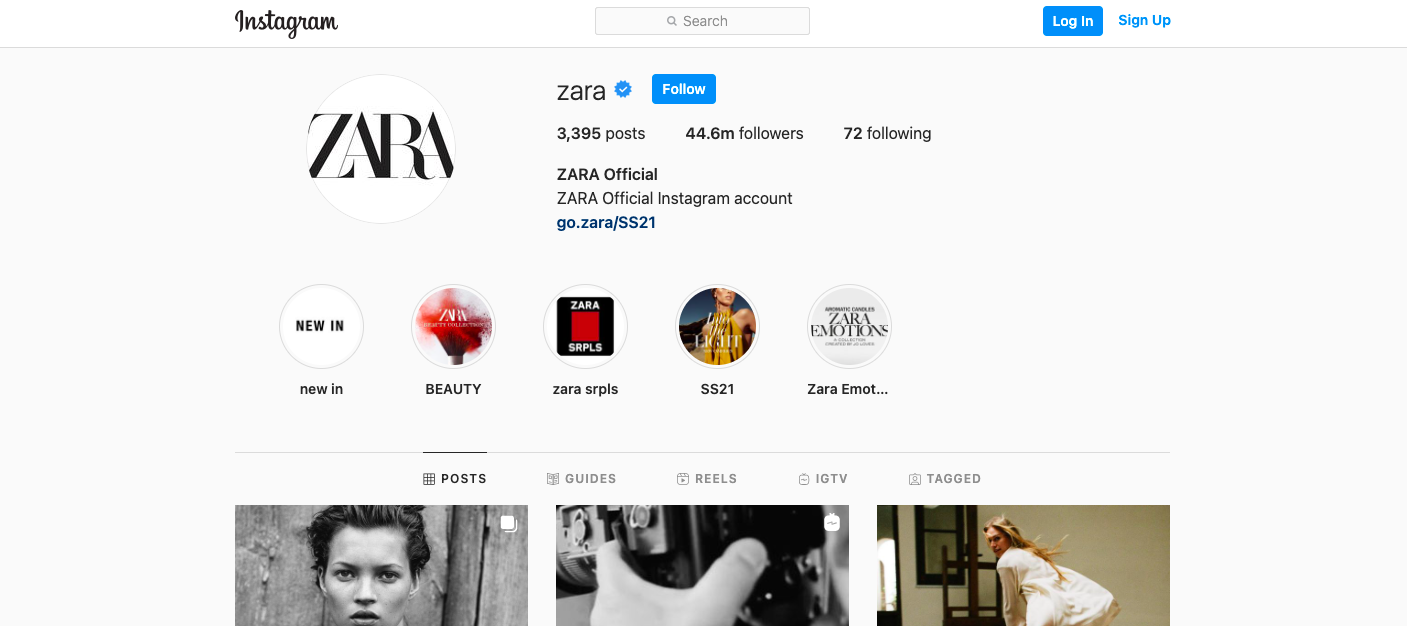
Phygital: Blending Physical And Digital Worlds
Last update: 12 December 2023 at 03:49 pm
We are all used to buying products either from a brick-and-mortar store or from eCommerce websites. But with the pandemic COVID-19, unavoidable changes have taken place in the way we shop. This is also the reason behind the steep increase in online shopping.
However, customers still crave the in-person shopping experience, and we are likely to witness a surge in the same once reopenings become a reality.
So, it has become crucial to craft marketing plans to incorporate physical and digital aspects that matter to customers, giving rise to Phygital experiences.
Phygital is the concept of using technology to connect the digital world with the physical world to give a unique interactive experience for the user.
What do you understand about Phygital Marketing? Put simply; it describes the concept of merging physical and digital experiences to create a consistent purchase experience across the two.
Using Phygital marketing will play a pivotal role in customer journey enhancement in tomorrow’s experience economy and we’re here to help you build the perfect strategy for your business.
What is A Phygital Strategy?
Phygital marketing will help you connect your customers’ digital experiences with offline physical experiences making the transition between them seamless.

The best aspects of Phygital marketing are letting the customers engage with your brand, leveraging advanced tech like artificial intelligence, augmented reality to optimize outreach costs, and maintain a human connection at the same time.
The need for digital experiences is apparent; with the large number of customers doing their shopping online, businesses have to sell their products on the internet. Moreover, the growth of digital marketing did not impact our willingness to make in-person purchases in physical stores.
Even as people get products and services online from the comforts of their homes, they still prefer to interact with brands physically. It is the reason why hardcover books are still selling, even with e-books being more accessible than ever before.
Traditional retail stores attract more buyers than in the past, despite the rise of e-commerce.
Due to this, it is vital to bring up Phygital marketing strategies to maximize your profitability.
A Phygital strategy focuses on providing customers with a seamless experience by combining the best of physical and digital marketing. Let’s start with the name of the concept. It would be impossible for some brands to dismiss the idea as a fad. However, this is far from true.
Customers will always want some form of real-life experience, regardless of how excellent the digital platforms are. Thus, marketers should expect physical-digital marketing to remain in trend for a very long time.
Developing A Phygital Marketing Strategy

If a physical and digital marketing campaign is to work, you must know how to create a good one. The prime rule is to focus on senses and emotions.
You must provide your customers with a full sensory experience, otherwise known as sensory marketing. Making an arrangement where customers can hear and see online texts is an apt example here.
With the physical world, you can provide them with the opportunities to taste, smell and touch. Come up with campaigns that exploit human connections.
In any marketing campaign, understanding the audience is fundamental. Thus, research yours thoroughly. Know how to appeal to shoppers both digitally and physically.
Sometimes it is hard to build a digital strategy from scratch which is why some agencies such as digital marketing agencies in the United Arab Emirates offer their services worldwide to take them online.
Examples of physical and digital marketing:
Social Media
Facebook, Instagram, and other social media platforms have made it easier to create a digital storefront where shops can sell their products for a brick-and-mortar business.

Pop up stores
Online businesses can add a physical world by creating a pop-up store. Use online customer data to identify where your clients are and where a pop-up store would best benefit customer engagement. It will enhance your business.
Click and Collect
Click and collect or you can say buy it online and collect in-store.
Phygital In Customer Experience
Using Phygital to connect the online and offline worlds will allow you to create a closer, more accurate customer experience. We are living in the digital world, and it is no longer a dream to buy all kinds of products on the web.

It is why we place such importance on the digital customer experience. More than half of the population is shopping online.
So the key lies in bridging online and physical sales together. The COVID-19 pandemic has accelerated changes in consumption habits such as in social tools, and caused digital purchases to grow.
Also, many of us miss interacting with sales associates and the personalized services we get while going to the store. In the phase of this duality, there is a new concept, phygital, that tries to bring the best of eCommerce and brick and mortar retail together.
Phygital is about marrying both your offline and online sales channels in one space to create a fluid customer experience.
There are many types of marketing strategies like omnichannel vs multichannel marketing:
- Multichannel Marketing – Customers can buy through numerous channels (two or more), and each channel exists as a separate purchase opportunity.
- Omnichannel Marketing – Creates a single customer experience across all channels. Integrating all channels altogether for flawless, connected customer experience.
Phygital retail takes it one step further than even omnichannel marketing as it aims to fully connect both offline and online experiences together—consistency in customer experience and purchasing process.
Current Examples Of Phygital Experiences
It is not just brick and mortar stores that are getting phygital; eCommerce brands are also opening pop-up stores to offer physical dimensions to their digital brand.
The benefit for customers and stores is that shoppers can physically touch and feel for the product. They can also engage with staff members who can advise on how to get the most out of the product.
If you are having a tough time with what a phygital omnichannel experience might look like, here are few phygital examples:
Amazon Go Retail Stores

The best example of phygital retail is the Amazon Go stores, where the physical and the digital complement each other. All this is achieved with the help of cutting-edge technology.
The physical component is eliminated to a great extent and speeds up the intermediate processes. Regarding the customer response to Amazon Go retail stores, 54% of them found it to be excellent, whereas 35% termed it as good.
Phygital Banking & Digital Payments
Banks have a long-term hold on what to do with their branches as more customers prefer doing their banking online. Although many people are happy with moving their day-to-day banking transactions online, only a few individuals see value in having conversations with the bank representative and seek an in-person experience.

So, banks have reimagined their branches as community education and information hubs where customers can interact with specialists through video conferences, book meeting spaces, and even offer co-working spaces and coffee shops.
At the height of the pandemic, people saw a shortage of coins as many individuals were buying home goods, groceries, and other products online.
Therefore, banking customers want more phygital options, and digital payments have a reach that goes way beyond digital banking.
Major retailers can think about how to make a check-out and purchase experience easier for customers.
Integrating your mobile apps with Google Pay or Apple Pay is another way to increase customers’ convenience and reduce customer efforts.
Thus initiatives like having the benefit of a Phygital digital payment process is that many individuals will appreciate.
Timberland Touchwalls’ Physical Store
To complement the in-store experience with their e-commerce selection, Timberland has introduced touch Walls in their Manhattan stores. The digital displays show customers their online inventory. The customers can touch the products to learn more and build personalized shopping lists.
In turn, Timberland harvested data from the interaction between stores’ touch walls, the fitting room, NFC tablets, and the store visits so that they can analyze it for better remarketing experiences and better retail. Thus, the Phygital phenomenon is helping them become more relevant in all aspects of customers’ experience.
Customer Portals & Websites
Healthcare and insurance companies are the two most important industries when it comes to creating website portals. They both are thought to be easy to navigate for customers to self-service things like requesting a prescription, paying their bills.
Also, customer centricity will play into the insurance app as well, but here the main focus plays into the design of the insurance app.
Anyhow, not all websites live up to this standard. Few are very difficult to navigate, even their FAQ pages, and customers end up calling customer service to get what they need, but it doesn’t have to be this way.
Websites should be optimized for mobile, as everyone has access to a cell phone, which is often their primary source of information for everyday activities.
More than half of the population consider switching to insurers for better digital features.
Also, for the patients who don’t need to be seen in person, website portals offer a Phygital way for them to have a conversation with their doctor while also leveraging technology to better fit their lifestyle. Using wearable devices to collect health stats is a great example of doing so.
Future Of Phygital
In the future, Phygital experience will become the norm. Phygital is about enhancing the relationship between a consumer and a company by making every interaction focused on the customer. Several years down in the post COVID world, the line between digital and physical experiences will be so blurred that customers won’t even recognize the difference.
There’s a lot to be explored, and disruptive tech like AI, and Augmented Reality/Virtual Realty will help create a new breed of services and products that can be knitted to form the Phygital experience.
If you need some help getting started with you Phygital experience, don’t hesitate to ask the help from some expert innovation agencies in the United Kingdom or closer to you.





